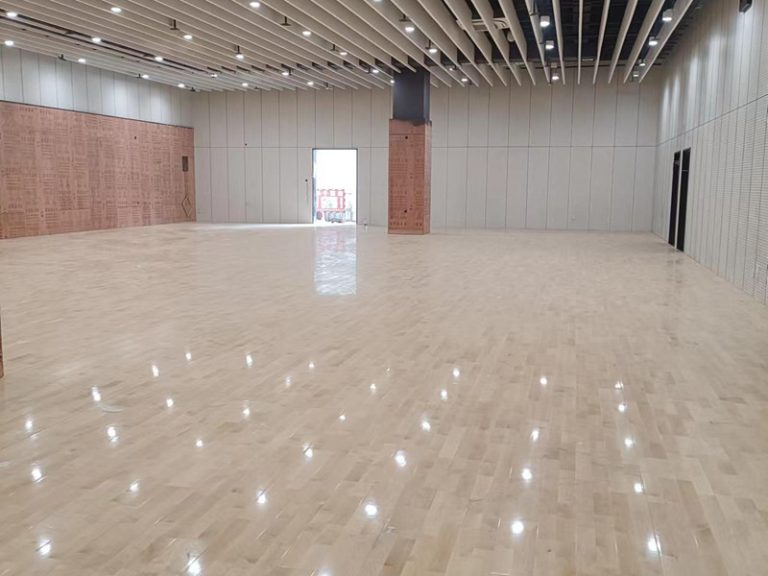Introduction
When it comes to indoor volleyball, the right court flooring can make all the difference in performance, safety, and longevity. Whether you’re designing a professional volleyball arena, upgrading a school gym, or setting up a recreational space, choosing the best sports surface is crucial.
In this guide, we’ll explore the top volleyball floor materials, key features to consider, and maintenance tips to keep your court in top condition.
Types of Indoor Volleyball Court Flooring
1. Hardwood Flooring (Traditional Maple)
The gold standard for professional volleyball courts, hardwood (usually maple or beech) provides excellent ball response and player traction.
Pros:
Superior shock absorption (reduces joint stress)
Consistent ball bounce
Long-lasting with proper care
Cons:
High initial cost
Requires regular refinishing
Alternative terms: wood sports floor, sprung hardwood court
2. PVC/Vinyl Sports Flooring
A popular synthetic volleyball court surface, PVC flooring offers a balance of affordability and performance.
Pros:
Water-resistant & low maintenance
Good cushioning for injury prevention
Available in interlocking tiles for easy installation
Cons:
Less ball control compared to hardwood
Can wear faster under heavy use
Alternative terms: vinyl athletic flooring, resilient sports surface
3. Rubber Modular Tiles
Ideal for multi-purpose gyms, rubber tiles provide durability and shock absorption.
Pros:
Slip-resistant & durable
Easy to replace damaged sections
Great for training facilities
Cons:
Heavier ball impact (less ideal for competitive play)
May require an underlayment for optimal performance
Alternative terms: rubberized sports tiles, impact-absorbing flooring
4. Polyurethane (PU) Surfaces
A hybrid option, PU floors combine the benefits of synthetic and hardwood surfaces.
Pros:
Seamless, smooth finish
Excellent shock absorption
Customizable colors & designs
Cons:
Higher installation cost
Requires professional application
Alternative terms: PU sports coating, elastic sports floor
Key Factors When Choosing Volleyball Court Flooring
Shock Absorption – Reduces player fatigue and injury risk.
Ball Rebound Consistency – Critical for fair gameplay.
Slip Resistance – Prevents falls during quick movements.
Durability – Must withstand spikes, dives, and heavy foot traffic.
Maintenance Requirements – Some floors need sanding, sealing, or special cleaners.
Maintenance Tips for Long-Lasting Performance
Hardwood Floors: Refinish every 5–10 years; clean with a microfiber mop.
Vinyl/Rubber Floors: Use pH-neutral cleaners; avoid abrasive tools.
PU Floors: Inspect for cracks; re-coat as needed.
Conclusion
Selecting the right indoor volleyball court flooring depends on your budget, usage level, and performance needs. Hardwood remains the top choice for professional play, while synthetic options (vinyl, rubber, PU) offer versatility for schools and rec centers.
For the best results, consult a sports flooring specialist to ensure your court meets official standards.


